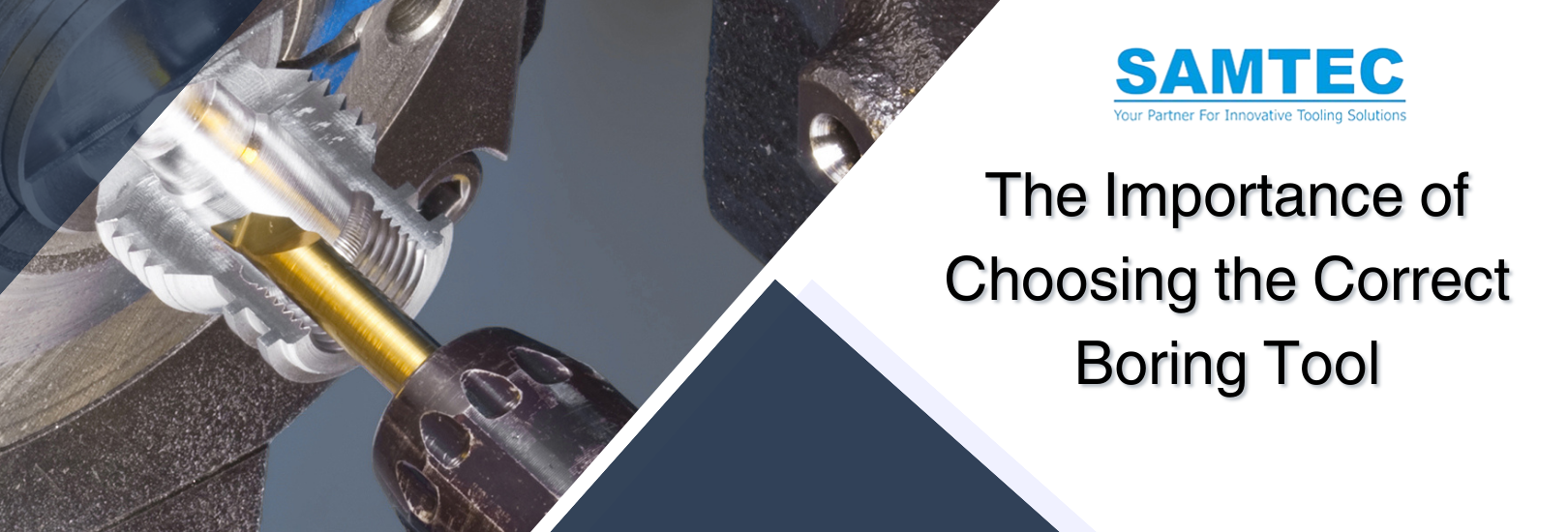
Drilling, reaming, and boring are fundamental operations in machining, each serving a specific purpose in creating or enlarging holes in workpieces. Among these, boring stands out for its precision in enlarging existing holes. In this article, we delve into the importance of choosing the correct boring tool, focusing on the factors that influence its effectiveness and efficiency.
Understanding Boring Operations:
Boring operations on turning machines are generally simpler compared to milling machines. On lathes, the boring tool is incrementally moved by the machine, while on mills, the boring head must be adjusted to achieve the desired hole size. This difference affects the range of hole sizes that can be achieved, with turning machines being more versatile in this aspect.
The Basic Boring Bar:
Basic boring bars, commonly found in machine shops, are economical and work well in most applications. These bars, which accept carbide inserts, have a single point of contact with the workpiece, which can lead to vibration or chatter, especially with steel bars. Steel bars tend to chatter once the axial depth of cut (DOC) exceeds 4 diameters deep, indicating the importance of minimizing unsupported tool length.
Overcoming Chatter:
Chatter during boring operations on a lathe can be overcome by using larger-diameter boring bars or adjusting cutting speeds and chip loads to alter cutting pressure. Steel bars, though common due to their lower cost, can be replaced by heavier materials like tungsten alloys or carbide for better damping and higher length-to-diameter ratios.
Boring on Mills:
An adjustable boring head is necessary for boring on milling machines, which complicates the setup. These heads allow for a range of hole sizes and can engage multiple cutting edges for increased efficiency. Twin boring heads, for example, can be set to the same diameter for faster feed rates or different diameters for more material removal per pass.
SAMTEC's Cutting-Edge Boring Solutions:
SAMTEC's range of boring heads includes micrometer heads, multi-cutter heads, and a variety of boring cutters, catering to diverse machining needs.Carbide one-piece cutters and indexable insert holder cutters from SAMTEC provide unmatched precision and durability, ensuring superior performance.
Adaptors, Reductions & Extensions:
SAMTEC offers a wide array of adaptors in DIN 2080, DIN 69871, and MAS BT, accompanied by extensions and reductions for adaptors, providing unmatched versatility and compatibility.
These components enable machinists to customize tool length and diameter, catering to specific machining requirements.
Final Considerations:
When finishing, a finish-boring head is preferred for making small adjustments to the diameter. It's crucial to pay strict attention to details and adhere to certain rules to ensure successful boring operations, such as keeping workpiece materials well-supported and minimizing unsupported tool length.
Summary
Choosing the correct boring tool is paramount in achieving precise and efficient holemaking operations. Factors such as tool material, diameter, and cutting parameters play crucial roles in the success of boring operations. By understanding these factors and adhering to best practices, machinists can ensure the desired results in their machining processes. SAMTEC's CO Boring Tools epitomize precision, durability, and reliability, making them the preferred choice of leading precision machine manufacturers globally. With a comprehensive range of tools and accessories, SAMTEC empowers machinists to achieve unparalleled precision and efficiency in their holemaking operations, setting new benchmarks in quality and performance.
Copyright © 2025 Samtectools
Best viewed in IE 10+, Firefox 20+, Chrome , Safari5+, Opera12+